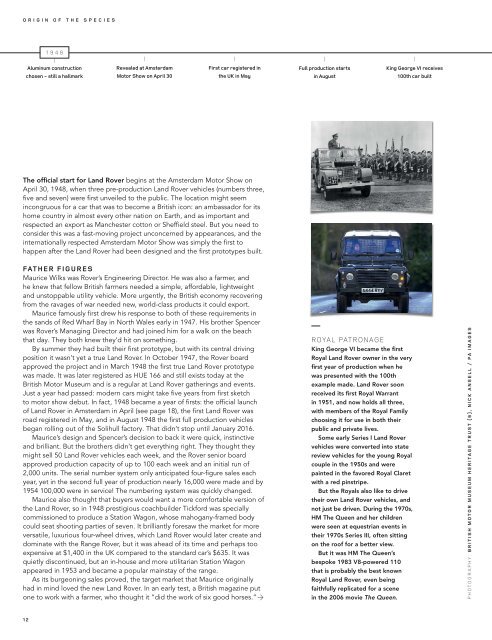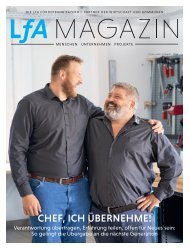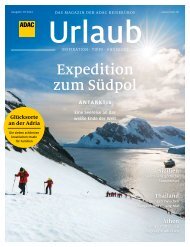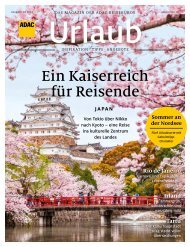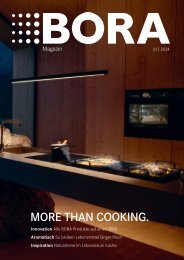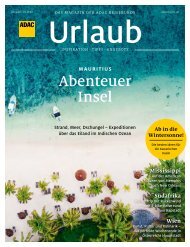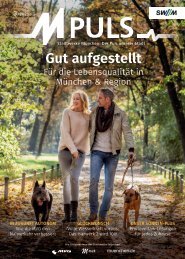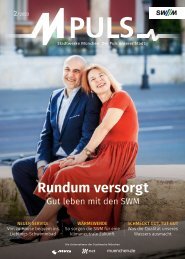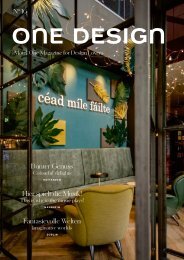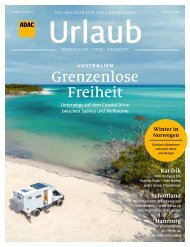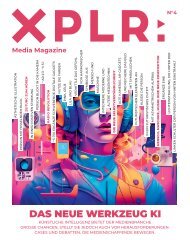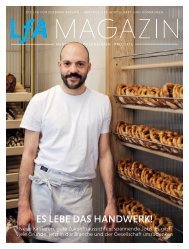ONELIFE #36 – US English
Land Rover’s Onelife magazine showcases stories from around the world that celebrate inner strength and the drive to go Above and Beyond. This special issue of Onelife marks Land Rover’s 70th anniversary – a celebration of unparalleled achievement and pioneering innovation. We bring you the incredible story of how we reunited an original 1948 car with its former owners, as well as looking back at Land Rover vehicles’ most intrepid expeditions around the globe.
Land Rover’s Onelife magazine showcases stories from around the world that celebrate inner strength and the drive to go Above and Beyond.
This special issue of Onelife marks Land Rover’s 70th anniversary – a celebration of unparalleled achievement and pioneering innovation. We bring you the incredible story of how we reunited an original 1948 car with its former owners, as well as looking back at Land Rover vehicles’ most intrepid expeditions around the globe.
You also want an ePaper? Increase the reach of your titles
YUMPU automatically turns print PDFs into web optimized ePapers that Google loves.
ORIGIN OF THE SPECIES<br />
1948<br />
|<br />
Aluminum construction<br />
chosen - still a hallmark<br />
|<br />
Revealed at Amsterdam<br />
Motor Show on April 30<br />
|<br />
First car registered in<br />
the UK in May<br />
|<br />
Full production starts<br />
in August<br />
|<br />
King George VI receives<br />
100th car built<br />
The official start for Land Rover begins at the Amsterdam Motor Show on<br />
April 30, 1948, when three pre-production Land Rover vehicles (numbers three,<br />
five and seven) were first unveiled to the public. The location might seem<br />
incongruous for a car that was to become a British icon: an ambassador for its<br />
home country in almost every other nation on Earth, and as important and<br />
respected an export as Manchester cotton or Sheffield steel. But you need to<br />
consider this was a fast-moving project unconcerned by appearances, and the<br />
internationally respected Amsterdam Motor Show was simply the first to<br />
happen after the Land Rover had been designed and the first prototypes built.<br />
FATHER FIGURES<br />
Maurice Wilks was Rover’s Engineering Director. He was also a farmer, and<br />
he knew that fellow British farmers needed a simple, affordable, lightweight<br />
and unstoppable utility vehicle. More urgently, the British economy recovering<br />
from the ravages of war needed new, world-class products it could export.<br />
Maurice famously first drew his response to both of these requirements in<br />
the sands of Red Wharf Bay in North Wales early in 1947. His brother Spencer<br />
was Rover’s Managing Director and had joined him for a walk on the beach<br />
that day. They both knew they’d hit on something.<br />
By summer they had built their first prototype, but with its central driving<br />
position it wasn’t yet a true Land Rover. In October 1947, the Rover board<br />
approved the project and in March 1948 the first true Land Rover prototype<br />
was made. It was later registered as HUE 166 and still exists today at the<br />
British Motor Museum and is a regular at Land Rover gatherings and events.<br />
Just a year had passed: modern cars might take five years from first sketch<br />
to motor show debut. In fact, 1948 became a year of firsts: the official launch<br />
of Land Rover in Amsterdam in April (see page 18), the first Land Rover was<br />
road registered in May, and in August 1948 the first full production vehicles<br />
began rolling out of the Solihull factory. That didn’t stop until January 2016.<br />
Maurice’s design and Spencer’s decision to back it were quick, instinctive<br />
and brilliant. But the brothers didn’t get everything right. They thought they<br />
might sell 50 Land Rover vehicles each week, and the Rover senior board<br />
approved production capacity of up to 100 each week and an initial run of<br />
2,000 units. The serial number system only anticipated four-figure sales each<br />
year, yet in the second full year of production nearly 16,000 were made and by<br />
1954 100,000 were in service! The numbering system was quickly changed.<br />
Maurice also thought that buyers would want a more comfortable version of<br />
the Land Rover, so in 1948 prestigious coachbuilder Tickford was specially<br />
commissioned to produce a Station Wagon, whose mahogany-framed body<br />
could seat shooting parties of seven. It brilliantly foresaw the market for more<br />
versatile, luxurious four-wheel drives, which Land Rover would later create and<br />
dominate with the Range Rover, but it was ahead of its time and perhaps too<br />
expensive at $1,400 in the UK compared to the standard car’s $635. It was<br />
quietly discontinued, but an in-house and more utilitarian Station Wagon<br />
appeared in 1953 and became a popular mainstay of the range.<br />
As its burgeoning sales proved, the target market that Maurice originally<br />
had in mind loved the new Land Rover. In an early test, a British magazine put<br />
one to work with a farmer, who thought it “did the work of six good horses.”<br />
ROYAL PATRONAGE<br />
King George VI became the first<br />
Royal Land Rover owner in the very<br />
first year of production when he<br />
was presented with the 100th<br />
example made. Land Rover soon<br />
received its first Royal Warrant<br />
in 1951, and now holds all three,<br />
with members of the Royal Family<br />
choosing it for use in both their<br />
public and private lives.<br />
Some early Series I Land Rover<br />
vehicles were converted into state<br />
review vehicles for the young Royal<br />
couple in the 1950s and were<br />
painted in the favored Royal Claret<br />
with a red pinstripe.<br />
But the Royals also like to drive<br />
their own Land Rover vehicles, and<br />
not just be driven. During the 1970s,<br />
HM The Queen and her children<br />
were seen at equestrian events in<br />
their 1970s Series III, often sitting<br />
on the roof for a better view.<br />
But it was HM The Queen’s<br />
bespoke 1983 V8-powered 110<br />
that is probably the best known<br />
Royal Land Rover, even being<br />
faithfully replicated for a scene<br />
in the 2006 movie The Queen.<br />
PHOTOGRAPHY: BRITISH MOTOR M<strong>US</strong>EUM HERITAGE TR<strong>US</strong>T (6), NICK ANSELL / PA IMAGES<br />
12


